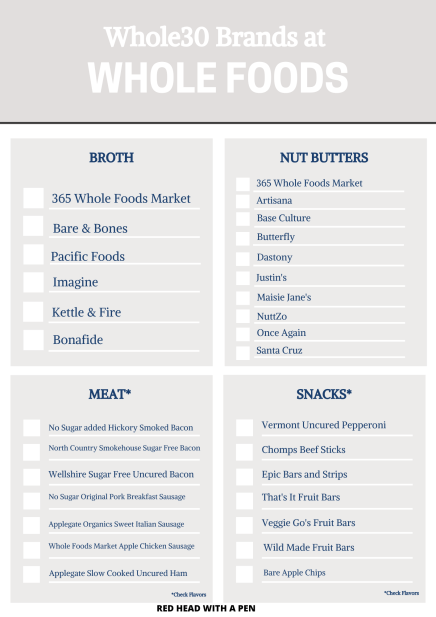
There are many delicious health foods that are nutritious and tasty. They will give you delicious, nutrient-rich foods that taste great. You can find them in fruits, vegetables, seeds, nuts, legumes and other foods. They are also delicious and require little preparation. Apples are an excellent choice, as they're rich in fiber and vitamin C. They are easy to find in supermarkets and can easily be added to smoothies.
Apart from their high nutritional value, prunes can help keep your digestion regular. They are rich in fibre and antioxidants, which makes them great for your body. A quarter cup of prunes contains 104 calories and 12% fibre. These can be added to cereals, smoothies, or baked goods. You can also add them to sauces or hummus. This makes them a wonderful snack to add into your diet. They are delicious and easy to obtain.
There are many starchy vegetable options. These include sweet potatoes and carrots as well as squash, corn, pumpkin, squash, and beets. These are great sources of fiber and energy. They are also rich in B and zinc. They are healthy for the body and high in iron and vitamin D. Whenever you prepare them at home, be sure to compare their nutritional value with other brands of the same food.

Besides salads, you can also opt for grilled fish. You can eat salmon, mackerel and herring as well as mackerel, mackerel and mackerel. They are loaded with omega-3 oils, which are important for signaling. They reduce the risk for heart disease, diabetes and even cancer.
Besides fruits and vegetables, you can also eat legumes, which are high in protein and dietary fibre. These foods will keep you full longer and help you stay away from snacking between meals. These foods can also be substituted for meat. You get the same protein but without any extra fat. You can avoid dairy products and meat by choosing calcium-enriched alternatives. These contain 100 mg of calcium per 100ml.
It is essential to choose the right foods. It is essential to eat fruits and veggies for good health. They're high in vitamins, minerals, and fibre. It is important to select the right types of fruits and vegetables to consume every day. And remember to eat them as often as you can, as they're good for your body. You should eat as many as possible.
Yogurt, another healthy food, is also available. Yogurt is an excellent breakfast option because it contains a lot of protein. It contains many vitamins and minerals. It's also a good source of soluble fiber, which is found in fruits, vegetables, and whole grains. It's important to mix the different types of foods to make them more interesting. Some prefer tea while others prefer coffee. They may not be as loved as their counterparts, but coffee has numerous health benefits. These include increased energy levels, decreased risk of type 2 diabetic complications, and improved sleep quality.

Beans are a good alternative to vegetables and fruits. Beans are low on fat and high-protein. They are also a good source for fiber, magnesium, potassium and other nutrients. They also contain plant-based protein. They are also very affordable. They can be used as side dishes and in salads. It's important to keep in mind that too many people don’t consume enough beans.
It is important to eat beans and seeds every day. They are high in phytonutrients as well fiber and vitamins B. They're also inexpensive. They can also help you lose weight and keep it off. A wide range of healthy foods will be available for you to enjoy every day. If you can afford to, try to eat them in small portions. They're filling and tasty, and they're simple to prepare.
FAQ
What lifestyle is most healthy?
You can live a healthier lifestyle if you eat healthy food and exercise regularly. These guidelines will help you live a long, healthy life.
Start small by changing your diet and exercising routine. For example, if you want to lose weight, try walking for 30 minutes every day. You can also take up dancing or swimming if you are looking to be more active. You could also join an online fitness program like Fitbit or Strava that tracks your activity levels.
What are the best 10 foods to eat?
These are the 10 best foods you can eat:
-
Avocados
-
Berries
-
Broccoli
-
Cauliflower
-
Eggs
-
Fish
-
Grains
-
Nuts
-
Oats
-
Salmon
What's the problem in BMI?
BMI stands for Body Mass Index, which is a measurement of body fat based on height and weight. The following formula can be used to calculate BMI.
Weight in kilograms divided with height in meters.
The result can be expressed as a number between zero and 25. A score greater than 18.5 is considered overweight. A score greater than 23 is considered obese.
A person who is 100 kg in weight and 1.75m in height will have a 22 BMI.
Why does our weight change as we get older?
How do I know if my bodyweight changes?
Weight loss occurs when there is less fat than muscle mass. This means that the amount of calories consumed must exceed the amount of energy used daily. Activity levels are the most common reason for weight loss. Other causes include illness, stress, pregnancy, hormonal imbalances, certain medications, and poor eating habits. Weight gain is when there are more calories than muscle mass. This happens when people consume more calories than they burn during the day. Overeating, increased physical activity and hormonal changes are all common reasons.
Our bodies lose weight because we eat fewer calories than we burn. Regular exercise increases metabolism, which means that we burn more calories per day. But, this does not mean that we will be thinner. It is important to know if we are losing weight or gaining muscle. If we are burning more calories than what we eat, then we will lose weight. However, if we consume more calories than we burn, we end up storing them as extra fat.
As we age we tend to be slower in moving and thus we don't move nearly as much. We also tend not to eat as much food as we used to when we were younger. This is why we tend to gain weight. We also tend to look larger because we have more muscle.
If you don't weigh yourself every week, it's impossible to determine how much weight has been lost. There are many ways you can measure your weight. You can gauge your waist size, hips, hips, thighs and arms. Some people prefer using bathroom scales and others prefer tape measure.
Track your progress by measuring your waistline and weighing yourself every week. You can also take pictures of yourself every few months to see how far you've come.
You can also check your height online to find out how many pounds you have. If you're 5'10' tall and weigh 180lbs, you'd likely weigh 180lbs.
Statistics
- WHO recommends reducing saturated fats to less than 10% of total energy intake; reducing trans-fats to less than 1% of total energy intake; and replacing both saturated fats and trans-fats to unsaturated fats. (who.int)
- The Dietary Guidelines for Americans recommend keeping added sugar intake below 10% of your daily calorie intake, while the World Health Organization recommends slashing added sugars to 5% or less of your daily calories for optimal health (59Trusted (healthline.com)
- According to the Physical Activity Guidelines for Americans, we should strive for at least 150 minutes of moderate intensity activity each week (54Trusted Source Smoking, harmful use of drugs, and alcohol abuse can all seriously negatively affect your health. (healthline.com)
- nutrients.[17]X Research sourceWhole grains to try include: 100% whole wheat pasta and bread, brown rice, whole grain oats, farro, millet, quinoa, and barley. (wikihow.com)
External Links
How To
What does "vitamin" actually mean?
Vitamins can be described as organic compounds found in food. Vitamins are necessary for us to absorb nutrients in the foods we consume. Vitamins cannot come from the body so food must provide them.
There are two types: water-soluble and fat-soluble vitamins. Water-soluble vitamins dissolve easily when they are dissolved in water. You can find vitamin C,B1 or thiamine, B2 or riboflavin and B3 or niacin, B3/niacin, B6/pyridoxine, folic Acid, biotin and pantothenic Acid as examples. The liver and fatty tissues are home to fat-soluble vitamins. You can find vitamin D, E K, A, beta carotene, and other fat-soluble vitamins.
Vitamins are classified according to their biological activity. There are eight major types of vitamins:
-
A - Vital for normal growth and maintaining good health.
-
C - vital for proper nerve function, and energy production.
-
D - necessary for healthy bones and teeth.
-
E is needed for good reproduction and vision.
-
K - essential for healthy muscles, nerves, and bones.
-
P - Essential for strong bones and teeth.
-
Q - aids digestion, absorption and absorption iron
-
R - Red blood cells are made from red blood cells.
The recommended daily allowance for vitamins (RDA) varies based on gender, age, and physical conditions. RDA values are set by the U.S. Food and Drug Administration (FDA).
For adults 19 years and over, the RDA of vitamin A is 400mg per day. Pregnant mothers need 600 micrograms per days because it is vital for the development and growth of their baby. Children ages 1-8 require 900 micrograms per day. Infants under one year of age require 700 micrograms per day, but this amount decreases to 500 micrograms per day between 9 months and 12 months of age.
Children aged between 1-18 years require 800 micrograms of sugar per day, while overweight children need 1000 micrograms. Children who are underweight receive 1200 micrograms every day to meet their nutritional requirements.
Children between 4 and 8 years old with anemia will need 2200 micrograms daily of vitamin C.
Adults over 50 years of age need 2000 micrograms per day for general health. Mothers who are pregnant, nursing, or have a high nutrient need will require 3000 micrograms a day.
Adults over 70 need 1500 micrograms daily, as they lose 10% of their muscle every ten years.
Women who are pregnant, nursing or breastfeeding need more than the RDA. Pregnant women need 4000 micrograms per dayduring pregnancy and 2500 micrograms per day after delivery. Breastfeeding mothers need 5000 mg per day when breastmilk is being produced.